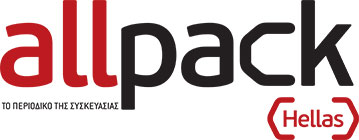PE: The EUR 40/t fall in the C2 reference dictated the direction prices took in April, namely downwards over a broad range. Only a few speciality products, predominantly from the LLD and HD sector, were able to escape the fall. After a slight recovery in the previous month, demand also experienced another decline. Order call-offs were again down across all segments, with two sectors serving as exceptions: pharmaceutical and medical. The food and beverage industry at least reported only minor reductions. A look at converter capacity utilisation will, however, come as a shock: players in this segment reported almost unanimously that their production activity in April had declined further compared with the previous month, dropping an average of 10 percentage points. So, what is going to happen in May? Prices are likely to continue their descent: the C2 reference for the month fell once again, this time by EUR 10/t. But lower prices alone do not create demand. As long as the desire of consumers to spend remains low, there can be no chance of increasing call-offs. The problem is that converters continue to lack sufficient orders.
PP: The upward momentum in PP prices seen in February and March dissipated in April 2023, and the market turned around on the back of the EUR 40/t decline in the C3 reference contract. The size of the rebates offered initially reflected the fall in the monomer price. Then, in the last third of the month, soft demand led to further deterioration. Producers’ hopes that prices would recover after Easter were thus dashed. Apart from the many special offers for large accounts, toward month’s end many other buyers were able to profit from improved rebates. On the back of the price reductions for base polymer, the compounds also saw price relief. In May, market players can expect renewed pressure on PP prices as the C3 reference has fallen again, this time by EUR 15/t, and demand remains sluggish, due not solely to the many holidays and gap days. Compounds, too, are likely to witness additional small price reductions.
PVC: Once again, the decline in the C2 reference (EUR 40/t) defined the price direction even though many contracts were decoupled from it and ended up lower. Despite continuing plant cutbacks, the PVC market tended long, partially because a major French producer ended forces majeures at its plants, and imports were readily available. Demand meanwhile remained weak. To begin with, the Easter break provided for a subdued start to the production month. As it progressed, demand failed to rise a significant extent. Consequently, orders from the construction sector remained well below the usual level, and only the pharmaceutical packaging industry provided for reliable volume call-offs. In view of bank holidays and the still high level of inflation – which is proving to be a problem, especially for the construction sector – demand is not expected to improve in May. Besides, significant quantities of imports will arrive from Asia and the US. The long market is likely to continue putting prices under pressure irrespective of the development of the C2 contract.
Styrenics: Styrenics prices changed only minimally in April 2023. The stage for this was set by the slight increase in the styrene reference contract of EUR 19/t. Most producers initially tried to catch up on lost margins by raising prices a little more. However, restrained demand hampered their demands. Even attempts to at least price in the increase in the monomer cost were unsuccessful in many cases. Ultimately, EPS was dominated by rollovers, and polystyrene prices also remained unchanged or at best increased minimally. ABS, by contrast, mostly recorded slight declines, especially since composite costs also fell due to the EUR 20/t discounts for butadiene and the EUR 154.50/t decrease in ACN. Demand for styrenics remains consistently weak. EPS and polystyrene are suffering from the slump in the construction sector, and there are no positive stimuli from other industries. This is unlikely to change in any significant way in May, especially as the month is interspersed with several public holidays and long weekends, which reduce production volumes of processors. Despite this, prices for at least PS and EPS should increase somewhat after the styrene reference rose a further EUR 55/t in May. It remains to be seen whether this will be enough to give ABS prices some buoyancy. Not only are the other composite costs slowing down the material’s upward potential, with butadiene down EUR 10/t, and ACN off EUR 67.50/t, but so is the prevailing oversupply.
PET: European PET producers would have liked to raise their prices in April, but demand was once again weaker than previously expected. Only on the Iberian Peninsula was home to temperatures around 30°C, which naturally boosted demand for water and spurred the market for PET bottles. In many parts of Europe, however, the prevailing cool weather had a negative impact on seasonal hopes. Nevertheless, local producers were at least spared price cuts. At their peak, import prices matched the European level, which meant that there was no real pressure from that quarter. Market players therefore agreed peaceably on carrying over the prices from March. The optimism at the start of the season has again been postponed by a month. In May, however, things should at last pick up – at least that is the hope. Considering the relatively expensive imports, increases are to be expected. The end of production cutbacks at many European sites should, however, restrict this to a reasonable level.
For more than 35 years, PIE has been an invaluable source of information for European plastics industry decision makers – a quick, yet in-depth look at the development of plastics markets and polymer prices. Available online 24/7 and as a printed newsletter twice a month. To read the entire report, go to www.pieweb.com and sign up for a 48-hour free trial!


































